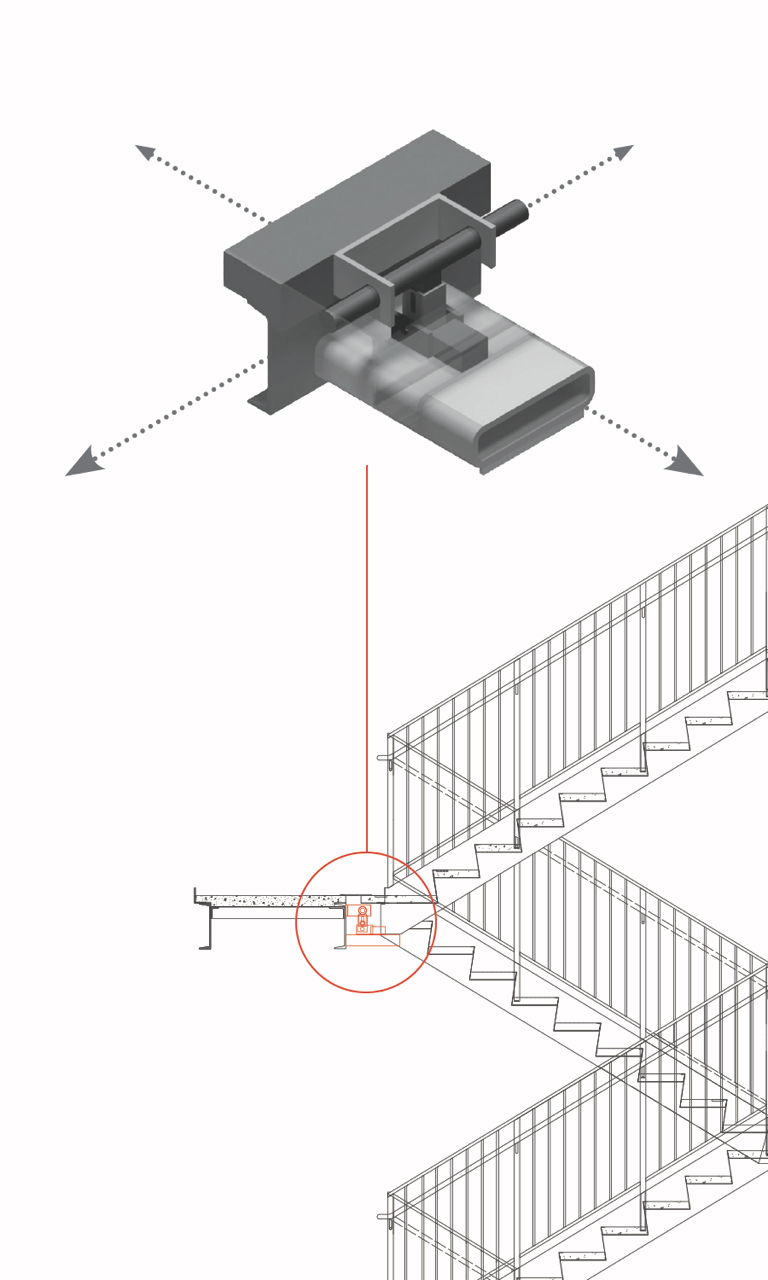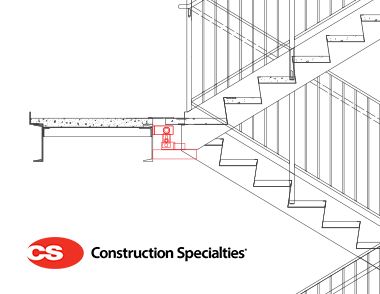For more than fifty years, Construction Specialties has led the way in solving challenges created by building movement. After working with industry experts and structural engineers across the country, the company is introducing a seismic innovation: DriftReady Stairs.
DriftReady Stairs’ patent-pending connectors keep stairs stable at rest, yet flexible when a building moves, accommodating seismic movement and interstory drift. Construction Specialties conducted two full-scale shake table test programs in the Earthquake Engineering Laboratory at the University of Nevada, Reno. Stairs equipped with the DriftReady connectors surpassed industry-standard interstory drift levels of 2.5 percent — reaching drift levels of up to 4.0 percent.
DriftReady Stairs also reduce the transfer of damaging force back into a structure during building movement, preventing stair connection failures. This helps to ensure safe egress for building occupants — and safe ingress for first responders — during and after a seismic event. For more information, visit csdriftready.com.

Thanks to their patent-pending connectors, DriftReady Stairs accommodate seismic movement and interstory drift. They reduce the transfer of damaging forces back into a structure during a seismic event, preventing connection failures and ensuring safe egress and ingress.
csdriftready.com
800.233.8493
Related Stories
| Aug 11, 2010
Special Recognition: Kingswood School Bloomfield Hills, Mich.
Kingswood School is perhaps the best example of Eliel Saarinen's work in North America. Designed in 1930 by the Finnish-born architect, the building was inspired by Frank Lloyd Wright's Prairie Style, with wide overhanging hipped roofs, long horizontal bands of windows, decorative leaded glass doors, and asymmetrical massing of elements.
| Aug 11, 2010
Giants 300 Index and Methodology
BD+C's annual Giants 300 list consists of U.S. firms that designed or constructed the largest volume of commercial, institutional, industrial, and multifamily residential buildings in 2008. Each spring, the editors survey the country's largest firms, ranking the top 300 across six categories: architects, architect/engineers, engineers, engineer/architects, contractors, and construction managers.
| Aug 11, 2010
The pride of Pasadena
As a shining symbol of civic pride in Los Angeles County, Pasadena City Hall stood as the stately centerpiece of Pasadena's Civic Center since 1927. To the casual observer, the rectangular edifice, designed by San Francisco Classicists John Bakewell, Jr., and Arthur Brown, Jr., appeared to be aging gracefully.
| Aug 11, 2010
Education's Big Upgrade
Forty-five percent of the country's elementary, middle, and high schools were built between 1950 and 1969 and will soon reach the end of their usefulness, according to the 2005–2008 K-12 School Market for Design & Construction Firms, published by ZweigWhite, a Massachusetts-based market-research firm.
| Aug 11, 2010
Great Solutions: Technology
19. Hybrid Geothermal Technology The team at Stantec saved $800,000 in construction costs by embedding geothermal piping into the structural piles at the WestJet office complex in Calgary, Alb., rather than drilling boreholes adjacent to the building site, which is the standard approach. Regular geothermal installation would have required about 200 boreholes, each about four-inches in diameter ...







